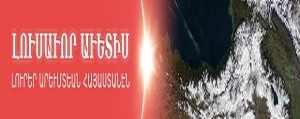

SUMMARY
In the 14th -15th centuries BC the chieftains (kings) and nobles of the Hurri-Armenian tribe of Mitani (Mittani,Mitanni) living in the south of the Armenian Highland between Lake Van and the Zagros mountains could consolidate a number of the Hurri-Armenian tribes small and middle state formations and establish the State of Mitani which was the first Armenian powerful state in the Armenian Highland.
The kings of Mitani struggled successfully against the two powerful states of the ancient world Egypt and the Hittite kingdom and established a powerful state, the boundaries of which stretched from the eastern shores of the Mediterranean Sea and Cilicia to Ashur, Nineveh, Arrapkha (Kerkuk),the Zagros and in the north-east — to the Caucasian foothills.
The powerful Mitani had a central position in western Asia. Mitani had taken under its control all the trade routs binding the eastern offshore regions of the Mediterranean Sea with Mesopotamia, Zagros and Pontus. Mitani controlled the region of the sources of the Tigris and the Euphrates rivers as well as rich and blossoming cities of North Syria which were populated mainly by the Hurrians and became rich mainly due to Hurries.
According to the archeological excavations carried out during the 19th – 20th centuries in western Asia and, particularly, in the Armenian Highland wealthy cultures establish which are known by the names of the Konya lowland, Neolithic, Halaf-Hasun (later Samarian), Shengavitian or Kur-Arax and so on. The homeland of these cultures is northern Mesopotamia, the Armenian Highlands and neighbouring areas. At the sources of these cultures and civilizations were the autochthones of the Armenian Highland — the Hurries (Hay-Armenians).
The states and state-formations founded by the autochthones-Hay-Armenians of the Armenian Highland have ancient history and during millennia many tribes and peoples appeared by their neighbourhood which used different names concerning our country and people.
For example, Sumerians, the settlements of the Hurries, the southern parts of the Armenian Highland and Northern Mesopotamia called Subir, Acadians – Subaru-Subari, Subartu (Shubartu). Egyptians called Hurries by the name of h’rw (kharu, khuru). They also used the names Nhrjn, Nakhrina, Nakharini, Maittani and Mitani. The written sources in the Assyrian and Babylonian scripts used the names Hanigalbat, Haligalbat. The Hittites used the name Hurry (Hurla), the Hurry kings called themselves Hurry, and the state Mitani.
The cuneiform group hu-u-ur researchers of the ancient inscriptions (H. Winkler, E. Meyer, E. Waydner, Forer, Waysbakh) read har, others — hur (B. Hrozni, A. Ungnad). Researcher connects the form har with the name Arians, and language of Hurries consider as an the old Arian language. Later in the text found in the capital of the Hittites Hattusas the form hurlili was read as hurri.
Thus was rejected the viewpoint which accepted the form harri and considered Hurrians as Arians. In scientific world the form hurry was accepted. In the middle of the 20-th century many new viewpoints and opinions appeared about the proto-homeland of the Arian tribes. The theory considering the Armenian Highland and the neighbouring territories as the Homeland of the ancestors of the Indo-Europeans was scientifically put into circulation.
It is testified by the archeological excavations (early agriculture, pottery, metallurgy, the cult of Sun-God and its symbols (cross, swastika), anthropological (continuity of anthropological type of “Armenoid”), linguistic (the Armenian language has all phonemes of the Indo-European language family). One can also notice that there is a particle ar (ur) both in the words harri and hurri, which also appears in the forms ir/er.
Consequently, both the forms hurri and harri with their ar, ur roots are connected with the name of the God Ar –Ara (Cosmic Creator,in Armenian –Araritch) and the Armenian Highland (Armani, Aratta, Ararat, Armenia, Arax, Aragats, Urartu, Urme, Urmia).
From ancient times Hay-Armenians were engaged in agriculture, cattle-breeding, metallurgy and pottery. It is accepted that these cultural elements created by human beings are in the basis of early civilization. Many settlements — villages and cities were founded in Northern Mesopotamia, the Armenian Highland and surrounding territories, including the capital city Vashugane, Jerusalem, Ashur, Nineveh, Babylon, Alalakh, Arrapkha (now Kirkuk), which became rich due to trade and handicraft. The wealthy cities and developed cultures attracted many tribes living in the neighbourhood of the Hay-Armenians and from the 3d-2nd milenium B.C. (probably earlier) began the devastating invasions of the Semitic tribes, the Hittites and Egyptians to northern Mesopotamia, the Armenian Highland and so on.
At the beginning of the 2-nd millennium B.C. two aggressive states — the Hittite and Egyptian, in the neighborhood of the Hurries, began realization of the expansionist policy. And in order to resist against these two hostile states the Hurries had to unite and establish a powerful state.
This project was successfully implemented by the Mitani kings. Before the unification of the tribes of Hurry and the formation of the state of Mitani, the Hittite texts inform about the military union of the Hurrian kings. During the struggle against Hittits the king of Mitani managed to lead the king of Hurrian warriors, and then the countries of the kings of the Hurrian tribes.
Owing to the military-political situation the military alliance of the united tribes was followed by their political and economic unification. According to the written sources the first king of Mitani was Shutarna I (the end of 16-th century B.C.), the son of Kirta. During the times of Parattarna (the beginning of 15-th century B.C.) and his successor Sausadattar (the middle of the 15-th century) Mitani became on the greatest states of western Asia in complicated international political and military conditions.
The burglar invasions of Egyptian kings were going on to Syria-Palestine. Tutmos I (the second part of 16-th century B.C.), Tutmos III (the second part of 15-th century), Amenhotep II (the end of the 15-th century B.C.) and Tutmos IV had organized many campaigns to Syria-Palestine often reaching the Euphrates. The periodical invasions conformed that the Hurrians resisted firmly the Egyptians which made them to sign a peace treaty at the reign of Tutmos IV.
According to the treaty Karkemish, on the one hand, Halep and Alalakh remained under Mitani’s control, and on the other hand, Palestine and southern parts of Syria passed to Egypt. Matchmaking ties were established between Egyptians and Hurrians. The princesses of Mitani Gilu-Hepan (the daughter of Shutarna II), Tadu Hepa (also Nefertiti, the daughter of Tushratta) and Tia, the daughter of the prince of Nihria (Nairi) were famous queens in the Egyptian royal court. Signing the peace treaty with Egypt Mitani had an opportunity to become more powerful and prosperous. But Hittits didn’t accept that state, which for its own turn challenged territories in Syria and along the coast of the Mediterranean sea. But all attempts of the Hittites were unsuccessful being confronted by the military forces of the Hurrians.
In 1345 B.C. Supiluliumas I (1345-1322 B.C.), a skilful diplomat, succeeded to the thron in Hatti. His period of reign was fatal for Mitani. After the king of Mitani Shutarna II during the struggle for succession on the throne between his son Artashumara and his brother Artadama the latter was killed by the courtier Utkhi. But the supporters of Artashumara succeeded to enthrone his younger brother Tushrata. As a result of the rivalry of external and internal hostile forces Mitani was divided into two parts: Hurri (the basin of the Aratsani ) and Mitani (the basin of Tigris, Aghdznik, Tsopk). In this situation Supiluliumas I played a great role.
Further attempts of the Hurrians to recover the might of the state failed. Strengthening (and semitizing) Assyria and Babylon for their turn continuously attacked and weakened Mitani, expending their boundaries on account of weakening Mitani. Hittits, Babylon, Assyria and other small kingdoms united against Mitani. As a result of that Mitani was defeated and divided by them. However, the kings of Assyria, Salmanasar I (1277-1245 B.C.), Tukulti- Ninurta I, Tiglatpalasar I (1115-1077 BC) and others in their inscriptions attested to frequent rebellions of the Hurriians and their punitive campaigns to suppress them. In the middle of the 13-th century B.C. ended the history of Mitani (Hurri-Mittani), the ancient Armenian state established in the Armenian Highland.
From the beginning of 3-rd millennium BC the influx of the Semitic tribes to the Hurry-populated Mesopotamia, southern parts of the Armenian Highland, eastern offshore regions of the Mediterranean sea (Palestine, Syria, Jordan, Phonice (Lebanon) and the other territories intensified especially after the fall of Mitani.
The confrontation had started between semitizing Messopotamia and the Armenian Highland (the Armenian-Arrian territory). That confrontation was reflected in the epic histories of “Haik and Bell”, “Ara Handsome and Shamiram”, “About King Aram” and others owing to Movses Khorenatsi’s “History of Armenian”(5th century). The fall of Mitani was the end of the state, but the nation continued to live.
In the north of the Armenian Highland the state of Haiassa and in the south Alzi (Aghdznik) continued their existence .At the same time new state formations had been established such as Shupria (Arme-Shupria, Sasun), Isuva (Tsopk), Babkhi (the mountainous regions of the Armenian Taurus) and so on.
After Mitani the states of the Hittits (the beginning of 12-th century B.C.) and Egypt (the end of I century B.C.) also vanished from the historic arena. And while these states vanished leaving only the name and the culture, the state of Mitani had a new continuation on behalf of a state of Ararat-Urartu formed at the beginning of the 9-th century B.C.
https://angelateryan.wordpress.com
